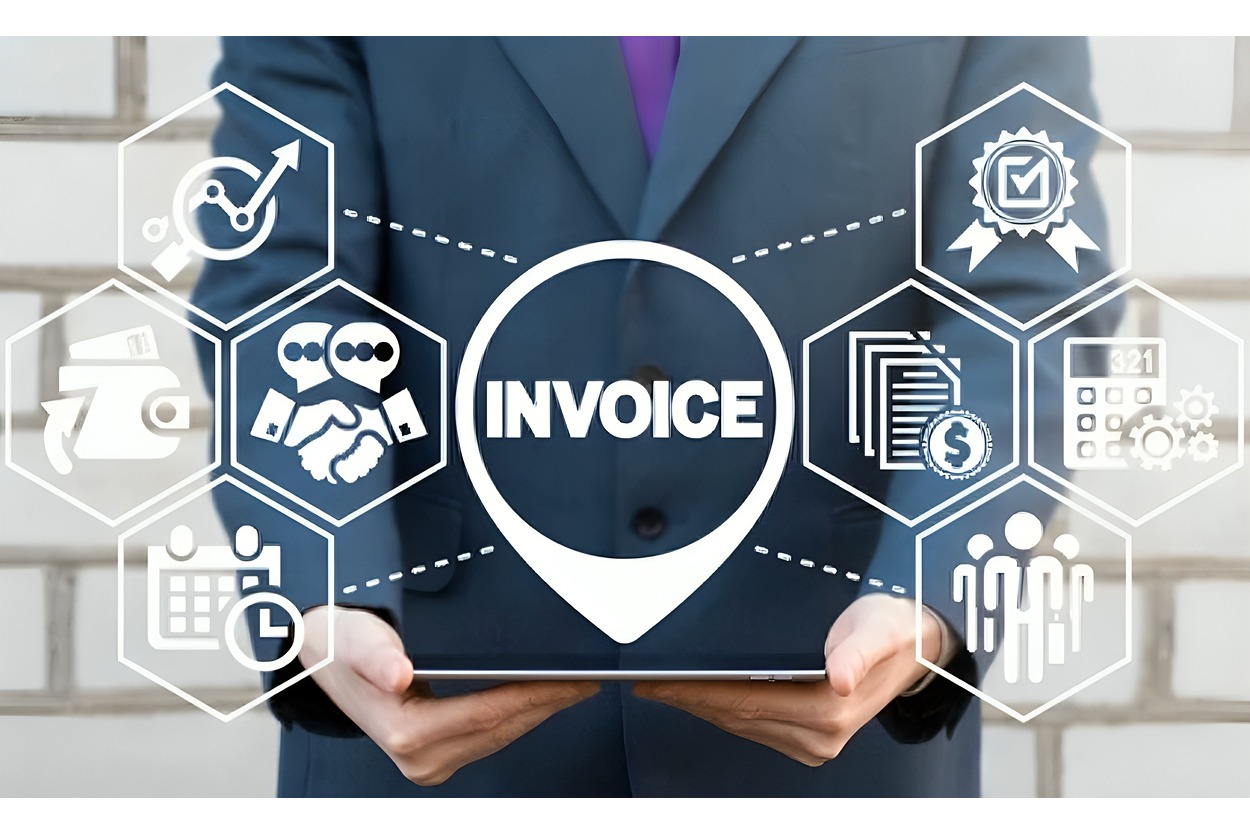Managing a company’s invoice-to-cash (I2C) cycle requires a delicate balance of firmness and tact since the necessity for prompt customer payments exists alongside the goal of preserving positive customer relationships. However, manual handling of the I2C process consumes substantial time, can be prone to errors and is often demanding on resources. Implementing an automation solution for the I2C process can strategically streamline workflows and empower businesses to maintain financial control. This blog will explore some of the major invoice-to-cash challenges and discuss how accounts receivable automation solutions can help navigate the complexities inherent in the cycle.
In this article
Top Challenges in the Manual Invoice-to-Cash Process
1. Inefficient Manual AR Processes in Clunky Invoicing Systems
Relying on a traditional invoicing system for your critical invoice-to-cash process can be inefficient or unscalable in the contemporary business landscape. When AR teams must manually create and process invoices, receivable management, or payments due to the lack of systems or automation, the I2C cycle becomes error prone and cashflow delays will ensue.
Solution: AR automation replaces manual procedures, streamlining various tasks such as invoicing, delivery, dunning and payments. By leveraging accounts receivable automation, AR teams can establish efficient invoicing workflows tailored to customer attributes, products, or amounts. This substantially diminishes the manual workload and costs associated with traditional invoice processing. The outcome is a shorter payment cycle, as customers receive invoices directly, along with reminder notifications, payment options, and the ability to self-serve through a secure AR portal. This eliminates bottlenecks linked to cumbersome manual invoicing systems.
2. Payment Friction Due to Inadequate Payment Options
Traditional payment methods like checks can create friction in modern B2B operations. A clunky invoicing system combined with manual payment processes increases the likelihood of payment delays, errors and duplications, which can bottleneck your cash flow. Similarly, offering your customers limited payment options can create friction in the payment process, restricting your cash flow and hindering operational efficiency. When payment methods do not align with your customers’ preferences or capabilities, payment delays are more likely to occur, putting additional strain on customer relationships.
Solution: It’s clear that a shift towards modern payment solutions is necessary. AR automation addresses this by providing diverse payment options that can be tailored to your customers’ preferences, minimizing payment friction while encouraging prompt payments.
3. Increased Operational Costs of Payment Processing
Manual invoice-to-cash processes involve extensive manual data entry, which can consume considerable hours of your finance team. Reliance on physical paperwork adds to the challenges, making it difficult to track invoices and payments. Much of the pain in the manual I2C cycle also stems from the remittance information being supplied separately from the payment, especially with electronic payments like wire transfers, EFT, ACH and cards. In addition to the repetitive clerical processes associated with manual invoice processing, the AR team ends up spending additional hours sifting through files on multiple systems to find matching remittance details or requesting clarification from the customer. All this in turn contributes to increased operational costs as well as rising processing costs. Manual AR workflows leave businesses with little time to address other critical financial tasks, causing them to spend time and money additionally on chasing easily-avoidable disputes instead of boosting their bottom lines.
Solution: Automation streamlines these processes, allowing the AR team to receive ACH payments and credit card payments seamlessly, thereby improving customer experiences and strengthening the company’s cash flow. With an automation solution, the AR team is relieved from manually recording invoices and reconciling accounts, ultimately reducing the company’s operational costs.
4. Low Visibility and Insufficient Data Insights
The limitations associated with traditional invoice-to-cash workflows, such as manual processes, lack of integration, and delays in information, all contribute to low visibility into a company’s cash flow. The fragmented nature of these workflows further complicates forecasting accuracy and financial planning. This lack of cohesive data insights can impede a company’s ability to adapt to market changes or capitalize on growth opportunities, underscoring the need for streamlined and integrated I2C processes. Further, when raising disputes, customers are met with opaque processes filled with email chains and missed communication instead of personalization and transparency.
Solution: Utilizing automation improves visibility by eliminating data silos, enabling proactive monitoring of cash flow. This not only enhances business visibility but also provides analytical insights, enabling better-informed decision-making. This proactive approach helps prevent problems and allows for the identification of opportunities in a more timely manner.
5. Poor Customer Experiences
The critical success factor for any business lies in effectively managing customer relationships and delivering an exceptional customer experience. While businesses recognize the importance of customer experience in invoicing and payments, accounts receivable finance teams may lack the necessary tools. Without a robust system in place, AR teams often face a manual and friction-filled business experience, making it challenging to provide smooth and consistent customer experiences.
Solution: An AR automation tool can provide customers with prompt notifications on upcoming payment dates and due invoices, offering better communication from the outset of the I2C cycle. It also enables customers to review their payment history, view outstanding payments and connect with the AR team in real-time for support. This helps eliminate any barriers that would prevent customers from paying on time, offers a positive customer experience and establishes trust at both ends.
Streamlining Invoice-to-Cash with AR Automation
With substantial processing gaps in manual I2C operations, transitioning to an accounts receivable automation solution is pivotal for optimizing the invoice-to-cash cycle. Not only will this reduce processing time but also shorten the I2C cycle, and ultimately improve your cash flow. Here is a detailed look at the advantages of integrated invoice-to-cash solutions:
Elevate Your Accounts Receivable with Automation
1. Enhanced Efficiency with a Simplified I2C Cycle
Implementing an AR automation platform can be transformative for your business. By automating the invoicing process, you can significantly reduce the manual workload of your finance team and improve customer satisfaction. Seamless and prompt invoice delivery to clients with embedded options to pay helps streamline operations and reduce payment friction. Automated payment reminders further support timely payments and a simplified invoice-to-cash cycle.
2. Accelerated Cash Flow
Manual AR is a laborious, challenging and error-prone process that slows down your cash flow. Invoice-to-cash automation software ensures prompt collection of invoices with minimal disputes. AR automation improves a company’s ability to forecast future cash flows because of more reliable and consistent payment collection patterns, which can be monitored using real-time data. The integration of your existing accounting system with an AR automation platform ensures seamless data transfer, eliminating the need for manual intervention and reducing the likelihood of duplicate entries. This enhances the productivity of your finance team, enabling consistent financial reports and ledgers, which allows them to focus on improving customer experience through efficient credit policies.
3. Timely Collection of Payments
Automation provides greater control over your I2C process, allowing for easy management of late-paying customers without compromising their experiences. Most finance leaders cite manual payment and invoice processing as their biggest challenge. Without a centralized system, collection specialists must manually follow up on overdue invoices which reduces the likelihood of a timely payment. AR automation offers a rules-based invoicing system, enabling customized invoicing processes based on customer location, product specifications and other attributes. This allows you to get creative with your invoicing process by choosing a selected criteria for a batch of invoices. It prompts your AR team to focus on collection priorities, delivers timely notifications and encourages efficient collection processes.
4. Accurate Financial Reporting & Tracking
With an AR automation platform, you can replace disjointed legacy systems with a centralized cloud-based platform, offering a unified view of cash flow, invoices, payments, and aging accounts receivables. Instead of using a patchwork of systems and gathering siloed information from multitudes of spreadsheets or reports, AR teams get a consolidated view of important customer account statuses and payment histories. Data visualization offered by AR automation platforms provides comprehensive financial reporting and analytical insights required by C-level executives for forecasting future financial needs and making well-informed business decisions.
5. Highly Secure Payment Processing
With I2C automation software, you can remove the friction from the customer’s payment journeys by speeding up payment processing with electronic methods. Manual payment processing is a major impediment to cash flow and is highly susceptible to fraud. Restrictive cash application processes or lack of payment processing technology forces customers and AR teams to continuously rely on unsecure payment options. AR automation solutions solve this issue by offering a range of country-specific payment options, helping reduce manual collection efforts. When these payment options are secured and have enhanced fraud prevention elements, payment collection cycles run smoother.
6. Positive Customer Experiences & Dispute Resolution
The benefits of automation software extend beyond streamlining the invoice-to-cash workflows. When customers are provided with invoicing data in useful portals and digital payment journeys, payment-related disputes and friction are naturally reduced. Even where disputes arise, delivering positive customer experiences while amicably resolving disputes is a challenge for many businesses. Misalignment in processes and miscommunication during the payment stage often leads customers to raise a dispute and even forgo payments altogether. A dedicated self-service customer portal allows customers to configure payment-related activities, reducing communication gaps and prompting quick dispute resolution while improving the overall customer experience. When all information is consolidated on a single platform, and AR teams have access to customer invoices and important documentation, dispute management becomes significantly easier.
Optimize Your Invoice-to-Cash Process with Cadency
AR automation can significantly improve your organization’s I2C processes, including better cash flow, reduced costs, improved customer service and advanced security. However, not all AR automation systems can offer you these benefits. Cadency takes a holistic view of AR automation, addressing each part of the AR process — from sending invoices to establishing credit terms to managing collections and compliance, enabling businesses to scale themselves and leverage investment opportunities. Designed to streamline invoice-to-cash workflows, Cadency is a powerful tool tailored for businesses of all sizes, offering the capability to scale from small to enterprise-level. The centralized dashboard of Cadency works as a single source of truth platform for your finance teams as it enhances workflow visibility and enables proactive identification of financial challenges. To keep your CFOs and executives on top of financial decisions, Cadency offers essential automation features for businesses looking to optimize their AR data insights beyond what existing ERP or accounting software can offer.
If you plan to integrate your ERP with an accounts receivable automation platform to better optimize your invoice-to-cash cycle, Cadency is the solution you are looking for. To explore how Cadency can transform your invoice-to-cash process, schedule a demo today!
Frequently Asked Questions
What is the invoice-to-cash process?
Invoice-to-cash is a process initiated when a business sends an invoice to collect payment for services provided on credit. The I2C process typically begins with issuing an invoice to the customer, followed by tracking, dunning, payment collection, and reconciliation.
What is invoice-to-cash automation?
Optimizing your current manual processes with the implementation of technology allows you to automate invoice-to-cash workflows, often called I2C automation. This system aims to accelerate your invoicing and collection processes to unlock your cash flow, all while securing your company’s bottom line.
Why is invoice-to-cash automation important?
Late-paying customers and overdue invoices impede your cash flow, which affects your organization’s bottom line. Having an I2C automation platform optimizes all aspects of invoicing, collections, and customer follow-up, speeding up collections and shortening the invoice-to-cash cycle to sustain your organization’s cash flow.






